Abstract
The study was conducted to evaluate one aspect of the entropy theory of aging, which hypothesizes that aging is the result of increasing disorder within the body, and which predicts that increasing mass lowers life span. The first evaluation of the impact of human size on longevity or life span in 1978, which was based on data for decreased groups of athletes and famous people in the USA, suggested that shorter, lighter men live longer than their taller, heavier counterparts. In 1990, a study of 1679 decreased men and women from the general American population supported these findings. In the present study data on the height, weight, and age at death of 373 men were obtained from records at the Veterans Administration Medical Center, San Diego, CA, USA. Men of height 175.3 cm or less lived an average of 4.95 years longer than those of height over 175.3 cm, while men of height 170.2 cm or less lived 7.46 years longer than those of at least 182.9 cm. An analysis by weight difference revealed a 7.72-year greater longevity for men of weight 63.6 kg or less compared with those of 90.9 kg or more. This corroborates earlier evidence and contradicts the popular notion that taller people are healthier. While short stature due to malnutrition or illness is undesirable, our study suggests that feeding children for maximum growth and physical development may not add to and may indeed be harmful to their long-term health and longevity.
Full text
PDF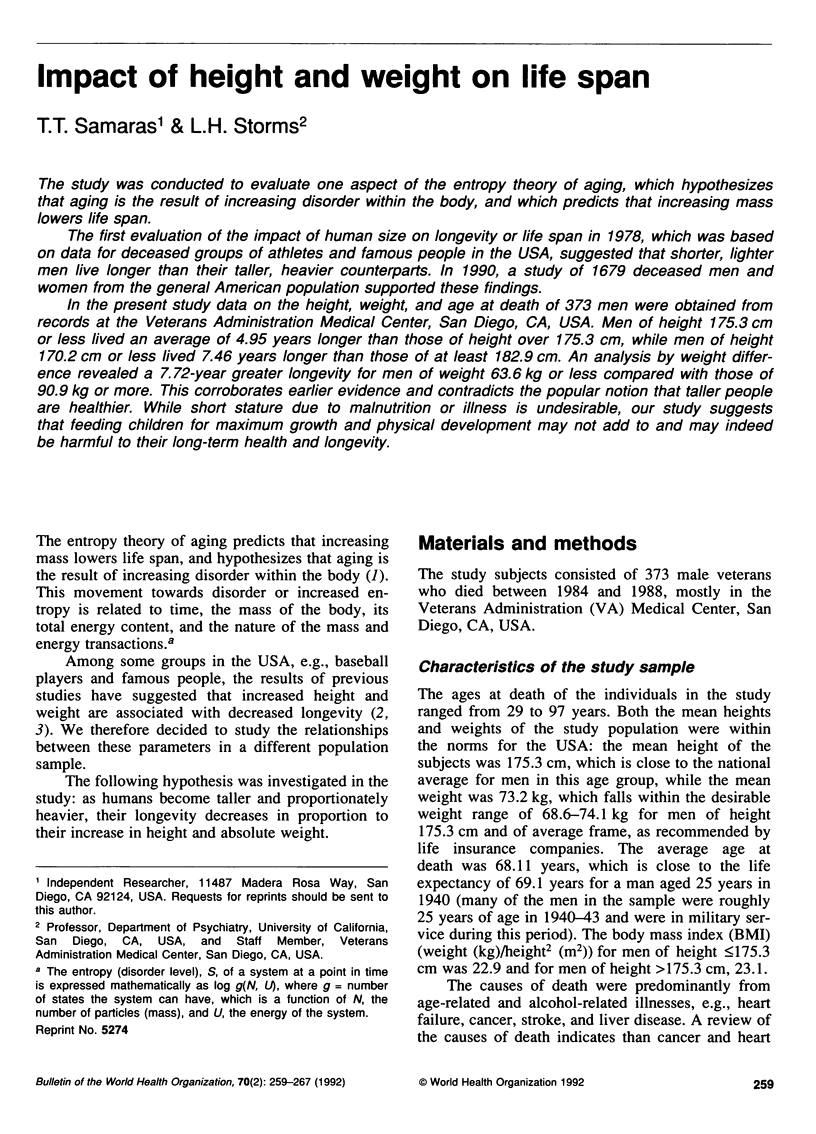
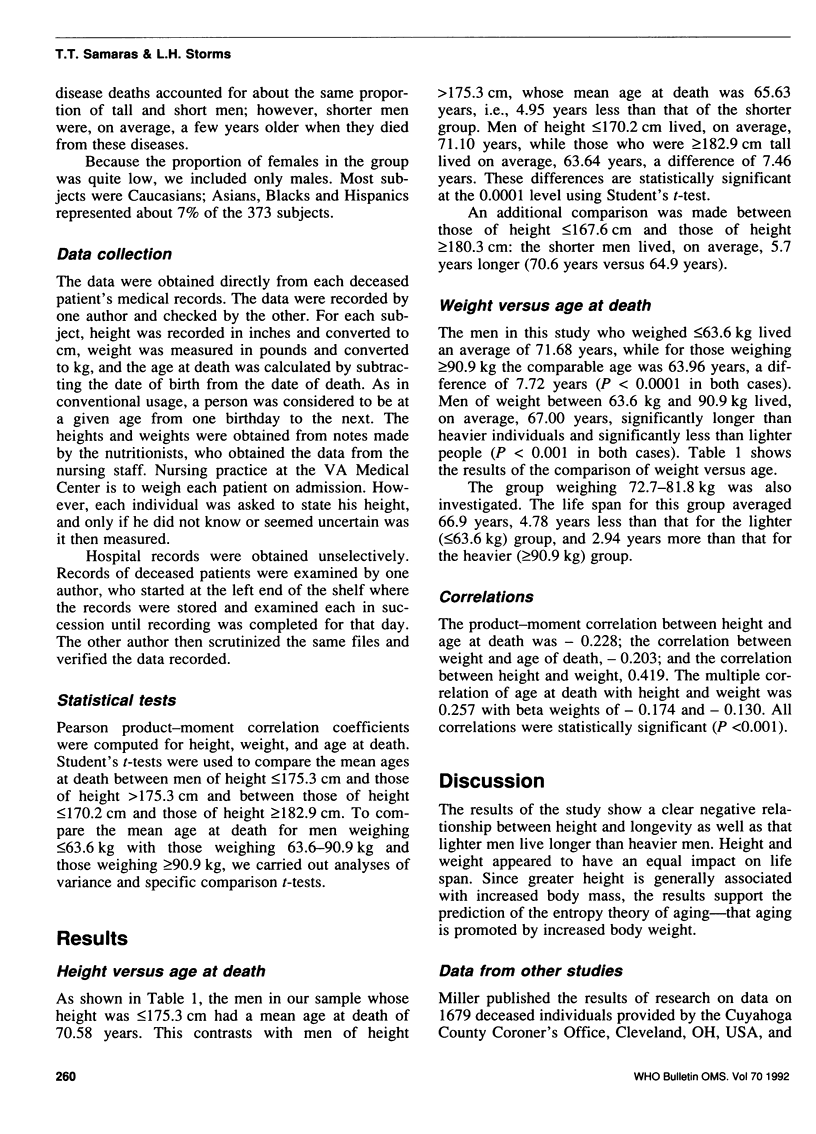
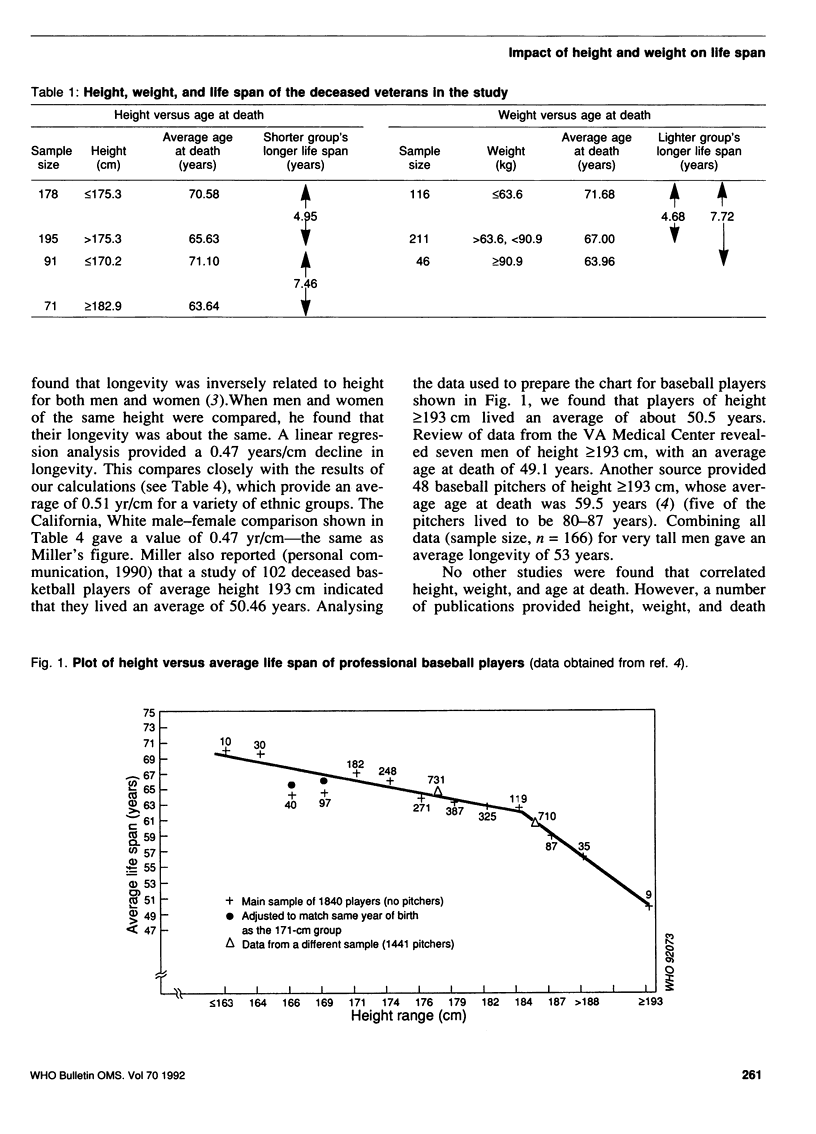
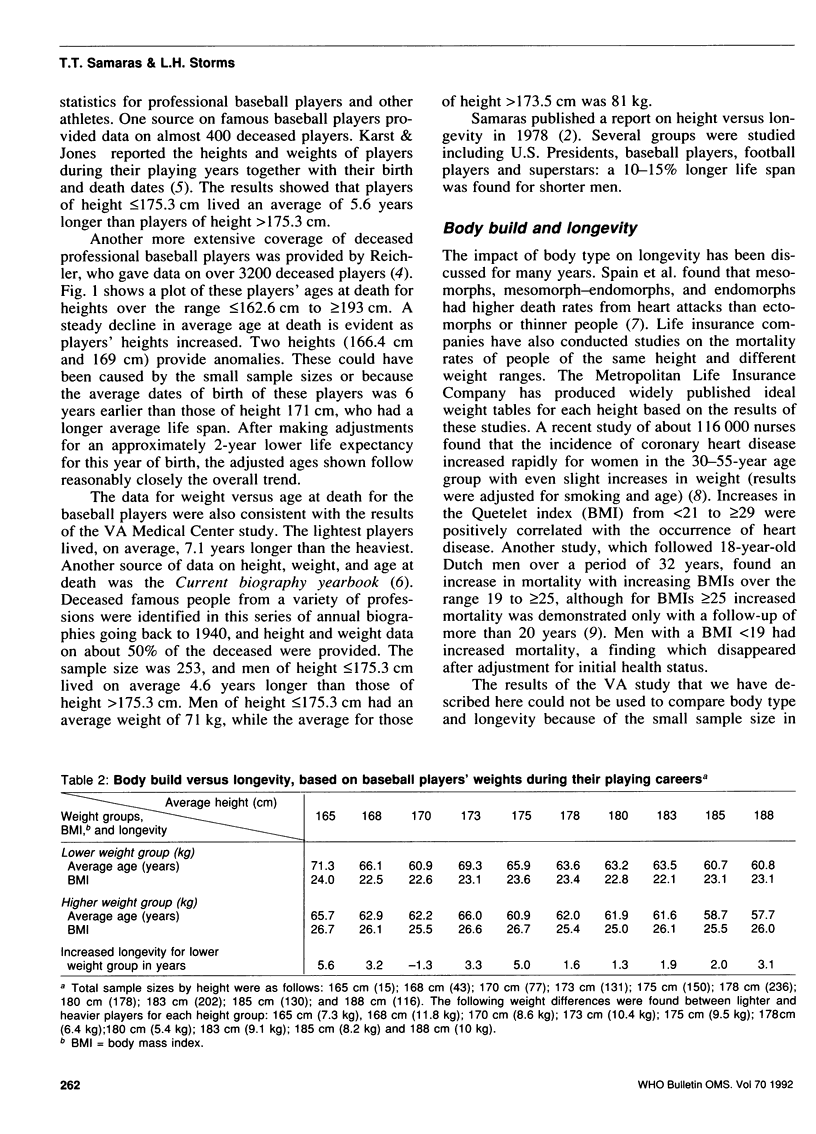
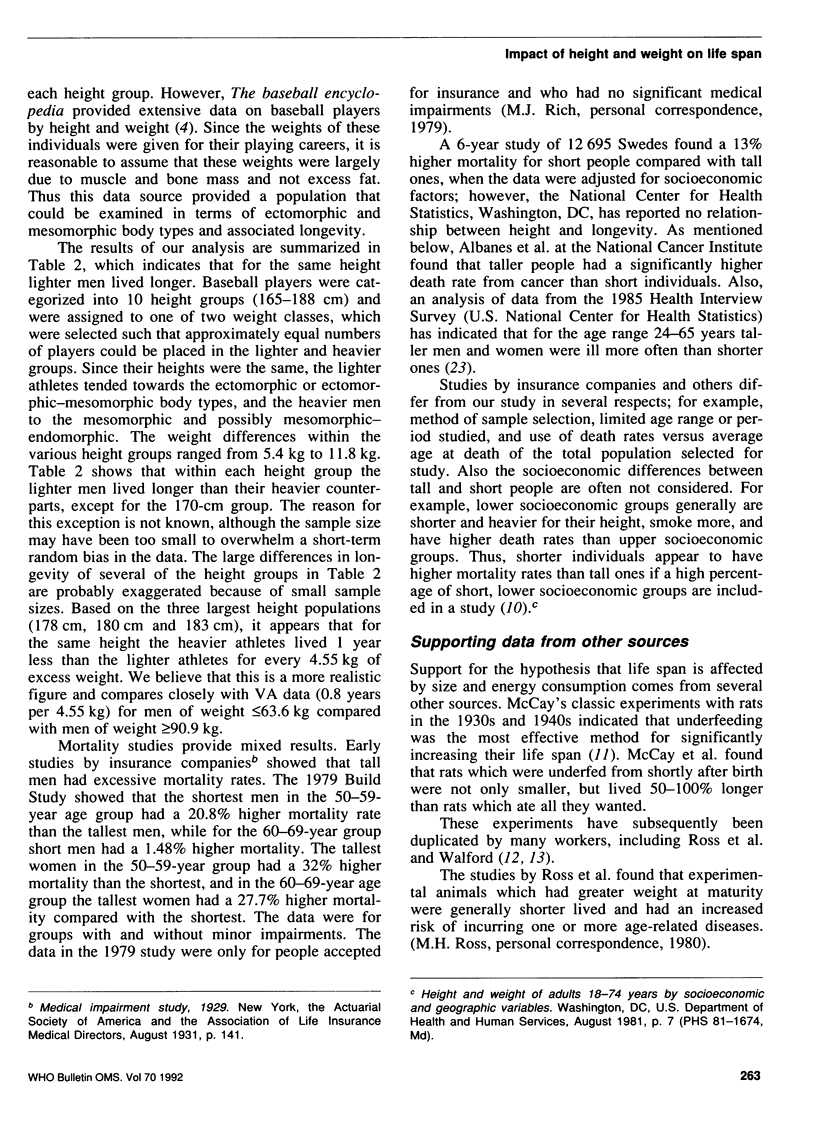
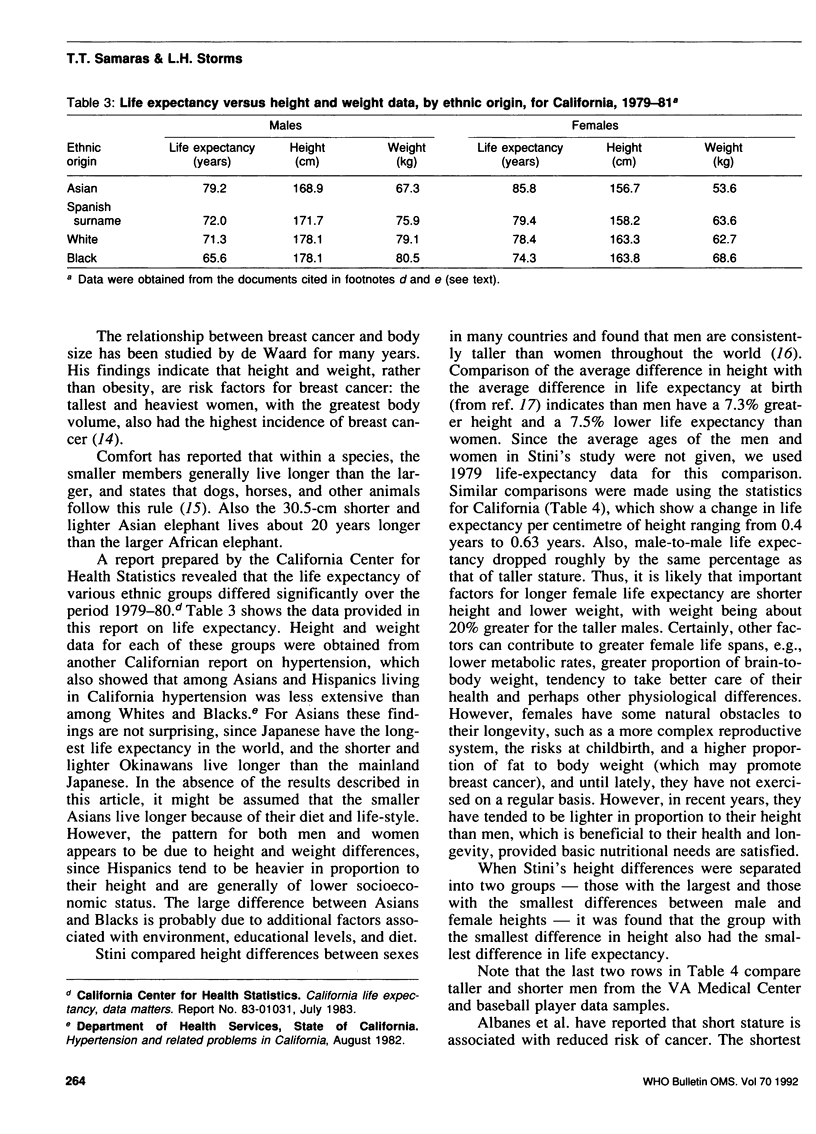
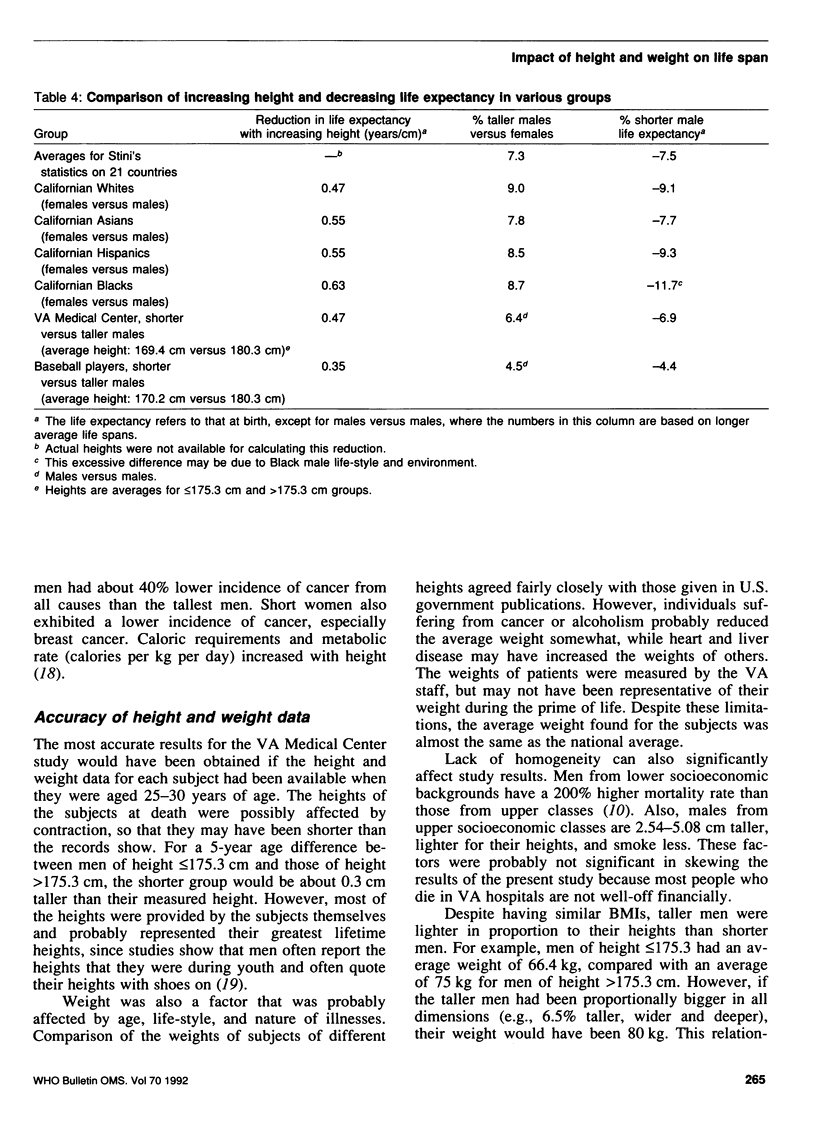
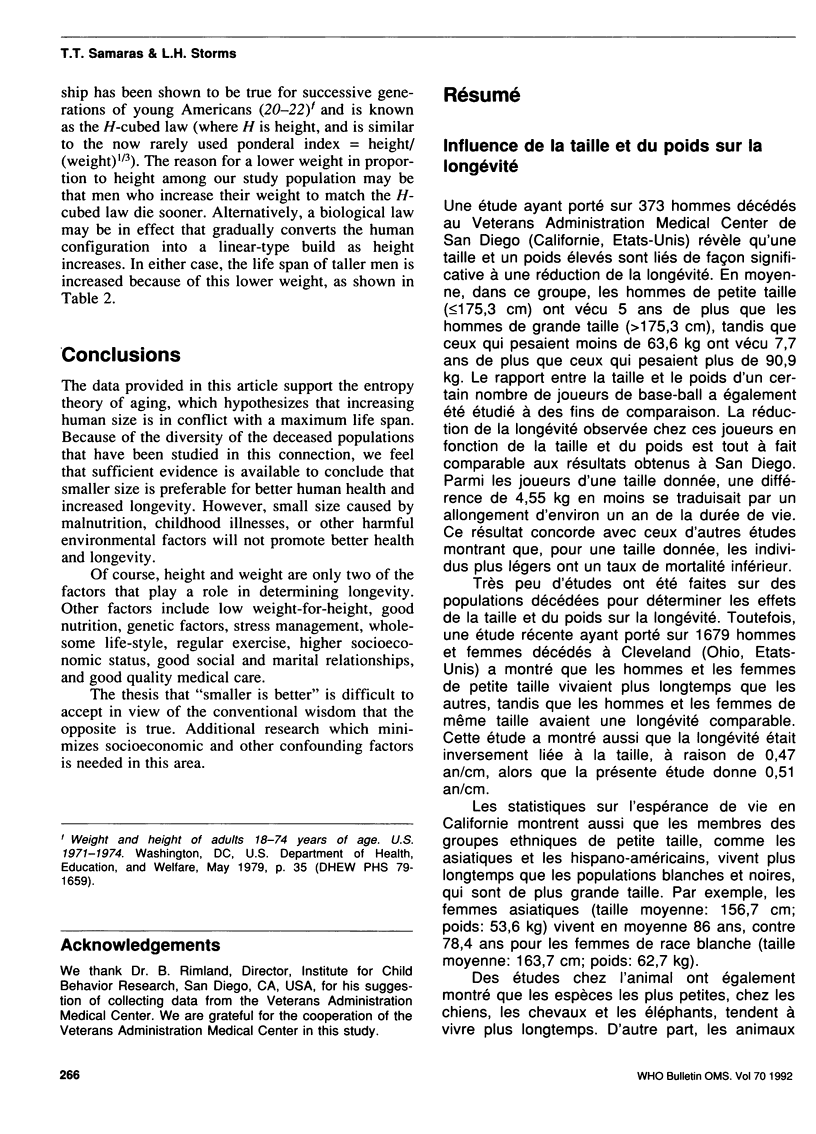
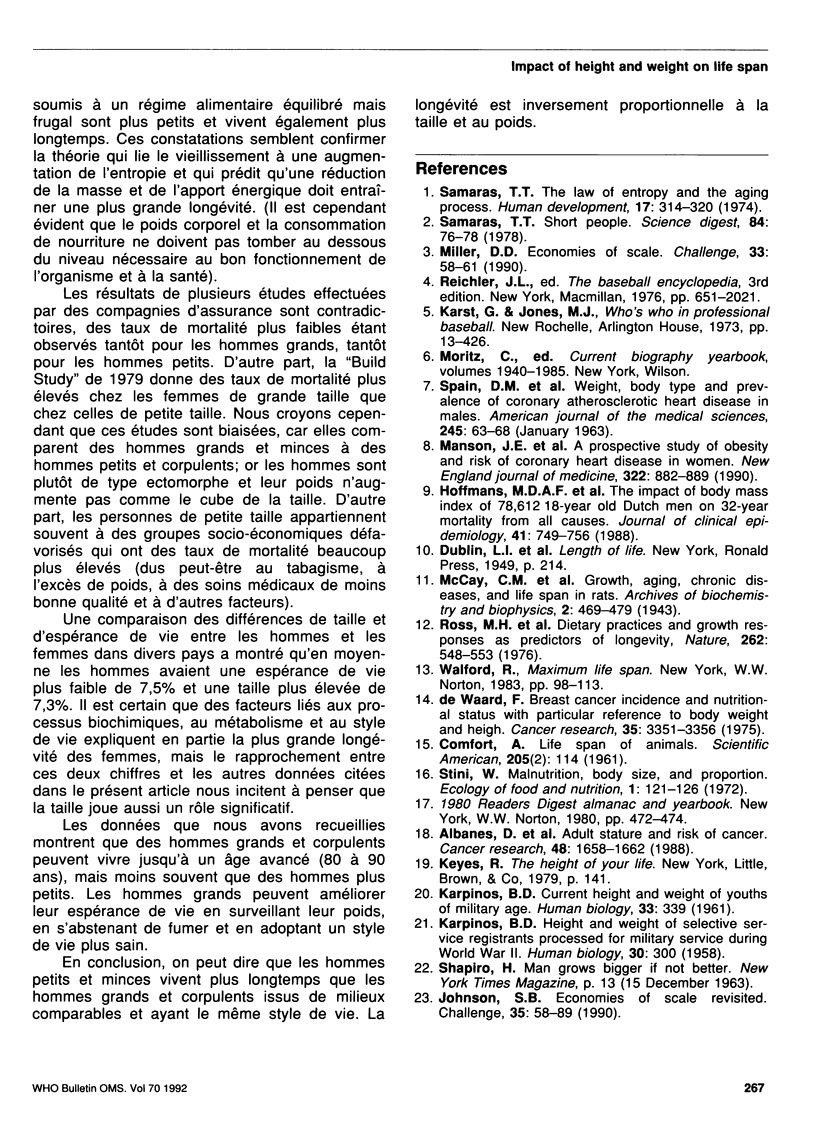
Selected References
These references are in PubMed. This may not be the complete list of references from this article.
- Albanes D., Jones D. Y., Schatzkin A., Micozzi M. S., Taylor P. R. Adult stature and risk of cancer. Cancer Res. 1988 Mar 15;48(6):1658–1662. [PubMed] [Google Scholar]
- Hoffmans M. D., Kromhout D., de Lezenne Coulander C. The impact of body mass index of 78,612 18-year old Dutch men on 32-year mortality from all causes. J Clin Epidemiol. 1988;41(8):749–756. doi: 10.1016/0895-4356(88)90161-8. [DOI] [PubMed] [Google Scholar]
- Ross M. H., Lustbader E., Bras G. Dietary practices and growth responses as predictors of longevity. Nature. 1976 Aug 12;262(5569):548–553. doi: 10.1038/262548a0. [DOI] [PubMed] [Google Scholar]
- Samaras T. T. The law of entropy and the aging process. Hum Dev. 1974;17(4):314–320. doi: 10.1159/000271354. [DOI] [PubMed] [Google Scholar]
- de Waard F. Breast cancer incidence and nutritional status with particular reference to body weight and height. Cancer Res. 1975 Nov;35(11 Pt 2):3351–3356. [PubMed] [Google Scholar]


